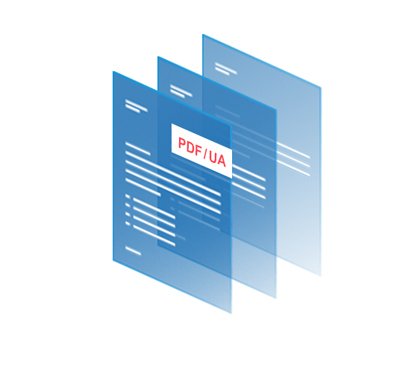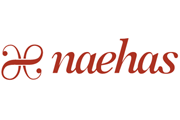DocBridge® Communication Suite
Customer Communication Management – CCM Software
- Producing and delivering omnichannel customer communications for B2C businesses
- AI-powered orchestration of all communication processes via a single web interface
- Innovative design and document automation
- Advanced management of resources for the design and production of communications
- Perfectly suited for transactional or batch high-volume production
- Fully rooted in open standards

Easy Integration. Limitless Potential. Reliable Communications.
The Cloud-Native Solution for Seamless, Personalized Customer Communications

Maximize potential by delivering complex customer communication scenarios

Streamline communication workflows for optimized CCM value chains

Interactively design and test communication workflows with a graphical modeling UI

Ensure flexibility and scalability across upstream leading business applications and downstream delivery services

Integrate seamlessly with RESTful web services, message queues, Kafka topics, SIEM tools, and custom extensions

Connect effortlessly with ecosystem platforms like Twilio, Camunda, and Salesforce

Monitor and track the entire CCM value chain comprehensively

Accelerate your CCM design and development process

Get real-time results immediately available while working in design or source code with innovative, responsive Live Preview – for any channel, with all business rules applied

Design templates intuitively with drag and drop and separation of content and styling. An AI assistant helps you create and optimize your templates

Minimize errors with immediate verification and helpful hints for fixing issues

View the layout and various output channels previews side-by-side and ensure that your documents are perfect even before the testing phase

Navigate through document structures using the intuitive tree view

Manage data sources for business users with re-usable data dictionaries and consistent data nomenclature

Developers can choose to edit document content directly in HTML and still benefit from real time live preview

Manage comprehensively all communication resources for your customer communication

Version all resources such as templates, texts, re-usable resources, data dictionaries, images, and communication flow configurations

Easily preview, compare versions and restore to previous versions

Keep an eye on the dependencies between resources and runtime references to external resources

Search and filtering resources for optimized design and maintenance of CCM resources

Check-out of working copies and intelligent resource locking for collaborative resource management

Apply fine-grained access controls for different roles to meet compliance requirements

Cut the cost and labour of delivering compliant, accessible omnichannel communications significantly

Create and test accessible PDF/UA documents via an intuitive user interface with real-time previews

Automate the conversion of millions of existing documents – regardless of format and origin

Ensure compliance with legal requirements and global accessibility standards

Ensure a perfect customer experience: Go beyond pure PDF/UA compliance with correctly formatted text, precise reading order and meaningful image descriptions

Benefit from maximum flexibility thanks to advanced tagging features and rules such as dynamic content and complex table logic

Increase efficiency and scalability by processing documents in batch (batch processing) or individually on-demand
Secure your future competitiveness with cutting-edge technologies

Cloud-first architecture for deployment in your private or virtual private cloud, while VM deployments are still possible.

Deployment in a matter of minutes to a Kubernetes or OpenShift cluster with the provided HELM charts

Easily integrate the solution into CI/CD pipelines.

Comprehensive secure RESTful-based integration gateway

Proven deployability on cloud hyper-scalers like AWS and Azure to leverage platform native services and scalability

Ready for AI: Generate templates and resources using large language models, and analyze templates and resources efficiently with advanced AI capabilities (coming in Winter 2024)
Customer Communication
the Way Your Customers Expect It

DocBridge® Communication Suite provides you with a streamlined, lean and powerful solution to manage your high volume of customer communication efficiently and traceably.
Thanks to a modern and intuitive user interface for document design and the management of all communication processes, you will always reach your customers with high-quality documents - on every physical and digital channel, according to your customers' preferences. By using open standards and the cloud-native approach, the solution can be seamlessly integrated into existing and future systems, both in the cloud and on-premise. It adapts cost-efficiently and flexibly to your business requirements and helps you to optimize your workflows and increase productivity.
Why DocBridge® Communication Suite?

Complete solution for all CCM needs
by focusing on the end-to-end CCM value chain leveraging cloud native concepts, complimented by a strong ecosystem of partner solutions

Maximum flexibility
in terms of any-prem deployment, scalability, integration, interfaces, supported output channels, document formats, and transactional and batch production

Long-term investment protection
Thanks to our firm commitment to open standards and based on a modern, cloud-ready microservice architecture the suite ensures flexible integration into existing and future systems, reduces dependence on individual providers, and scales seamlessly with growing business needs

Increased productivity
through automation and acceleration of processes, modern and intuitive design (AI-supported) and process workflow and high performance document processing
Release Fall 2025 – what's new
In focus: AI-supported efficiency, business-oriented
template design, and integrated business flows
End-to-End CCM Solution: From Capture to Delivery
Does your current CCM solution no longer fully meet your needs?
Benefit from our expert advice
Design and deliver communications tailored to your customers' needs
Three ways to make your CCM fit for the future
More than 1,500 customers in over 50 countries rely on our products.









